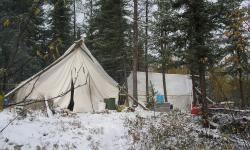Option Partner Rockridge Resources Announces Inaugural NI 43-101 Resource Estimate for the Knife Lake Project
Saskatchewan | August 14, 2019Cranbrook, BC, August 14th, 2019: Eagle Plains Resources Ltd. (TSX-V “EPL”) (the Company) has been notified by option partner Rockridge Resources Ltd. (TSX-V: ROCK) (OTCQB: RRRLF) (Frankfurt: RR0) that it has announced the first NI 43-101 resource estimate for its flagship Knife Lake Project located in Saskatchewan, Canada (the “Knife Lake Project” or “Property”). Rockridge entered into an Option Agreement in late 2018 with Eagle Plains to acquire a 100% interest in the Property that covers the majority of the Knife Lake Cu-Zn-Ag-Co VMS deposit (option details below). The contiguous claims total approximately 85,196 hectares and are located approximately 50 km northwest of Sandy Bay, Saskatchewan.
See Knife Lake regional map
Highlights:
- Recently-completed diamond drilling program plus historical drill core provided data for completion of the first NI 43-101 resource estimate for the Knife Lake deposit
- Knife Lake is a near-surface VMS deposit starting a few metres below surface with a known down-dip length of up to 400m. The current length along strike is 3700m, with the deposit remaining open at depth and along strike for potential resource expansion.
- Indicated resources of 3.8 million tonnes at 1.02% CuEq (0.4% CuEq cut-off)
- Inferred resources of 7.9 million tonnes at 0.67% CuEq (0.4% CuEq cut-off)
- Deposit is a remobilized portion of a presumably larger “primary” VMS deposit; most of the historical work has consisted of shallow drilling at the deposit area with little regional work carried out and limited deeper drilling below the deposit
- Summer field program is set to commence to refine and prioritize numerous regional exploration targets on the highly prospective and under-explored property
Tim Termuende, P.Geo., President and CEO of Eagle Plains stated recently: "We congratulate Rockridge on achieving this important milestone for the Knife Lake project. With the potential for expansion in the deposit area itself and the substantial land package and favourable geology surrounding the deposit, we are confident that continuing fieldwork will yield positive results. As significant Rockridge shareholders, we look forward to further advances in the Project.”
Knife Lake Resource Parameters
The resource for the Knife Lake deposit has been confined within an open pit shape to define “reasonable prospects of eventual economic extraction” using the following input parameters:
| Cutoff | Tonnage | Grades | Metal Content | |||||||||
|---|---|---|---|---|---|---|---|---|---|---|---|---|
| Cu Eqv (%) | (kt) | CuEq (%) | Cu (%) | Ag (gpt) | Au (gpt) | Co (ppm) | Zn (ppm) | NSR ($CDN) |
CuEq Mlbs | Cu - Mlbs | Ag - kOz | Au -Oz |
| 0.2 | 11,106 | 0.58 | 0.45 | 2.1 | 0.069 | 50.0 | 1261.8 | 42.50 | 141 | 110 | 750 | 24,601 |
| 0.4 | 7,902 | 0.67 | 0.53 | 2.4 | 0.084 | 53.1 | 1454.9 | 49.74 | 117 | 92 | 610 | 21,340 |
| 0.6 | 3,626 | 0.88 | 0.70 | 3.0 | 0.111 | 60.7 | 1734.1 | 65.28 | 71 | 56 | 350 | 12,963 |
In addition, an exchange rate of $CDN:$US of 0.77 has been used with a mining cost of $CDN 1.30/tonne and a royalty of 2% applied to the NSR values. Interpolation for all metals has been done using 4 passes with anisotropic distances based on variography for 5 domains that have been created based on the mineralization. Ordinary kriging (OK) has been used as the final grades for all metals except Au which has final grades based on inverse distance squared (ID2) for better validation of the model. Outlier restriction of high grades for each metal and domain have been applied where deemed necessary based on cumulative probability plots (CPP) and percent of metal removed.
Cu Eqv values were calculated using the formula CUEQV = CU% + ZN%*0.398 + CO%*5.901+AUGPT*0.553+AGGPT*0.005
See the Rockridge news release for a more detailed description of the Knife Lake deposit
Summer Exploration Program
A summer field exploration program is scheduled to commence shortly and will focus on evaluating existing, highly-prospective targets within the large landholding, with targets in the immediate vicinity of the Knife Lake deposit being prioritized. A subsequent program of geophysics and drilling is planned to test the highest priority targets.
Knife Lake contains typical VMS mineralogy which has been significantly modified and partially remobilized during the emplacement of granitic rocks. Therefore, the known deposit may represent a remobilized portion of a presumably larger “primary” VMS deposit based on general observations about the mineralogy, mineral textures and metal ratios in the deposit. Most of the historical work has consisted of shallow drilling at the deposit area with little regional work carried out and limited deeper drilling below the deposit. As a result, there is strong discovery potential both at depth and regionally.
Knife Lake Geology and History
The Knife Lake Project is interpreted to be a remobilized VMS deposit. The stratabound mineralized zone is approximately 15m thick and contains copper, silver, zinc, gold and cobalt mineralization which dips 30° to 50° eastward over a known strike-length of 3,700 metres within the property area, and a known average down-dip extension of approximately 300 metres.
Over 400 diamond drill holes have been completed in and around the current property boundaries, with much of this drill core stored under cover and in very good condition. Within the resource estimate block model volume there are 333 drillholes, drilled since the 1990’s era which have been used for grade interpolation. Historic 1970’s and earlier drilling have not been used because grades could not be verified.
A 357kV powerline runs within 16 km of the Knife Lake Deposit area, greatly enhancing the project’s infrastructure.
The deposit is hosted by felsic to intermediate volcanic and volcaniclastic rocks which have been metamorphosed to upper amphibolite facies. The deposit contains VMS mineralogy which has been significantly modified and partially remobilized during the emplacement of granitic rocks. The mineralization straddles the boundary between two rock units and occurs on both limbs of an interpreted overturned fold.
The Company completed twelve holes consisting of 1,053m of diamond drilling in the 2019 winter drilling program. This represented the first work on the property since 2001 and had two primary objectives: confirm the tenor of mineralization reported by previous operators and expand known zones of mineralization. Highlights from the drill program included previously reported hole KF19003 which intersected net-textured to semi-massive sulphide mineralization from 11.2m to 48.8m downhole. This 37.6m interval returned 2.03% Cu, 0.19 g/t Au, 9.88 g/t Ag, 0.36% Zn, and 0.01% Co for an estimated 2.42% CuEq. Additionally, previously reported drill hole KF19001 intersected net-textured to fracture-controlled sulphide mineralization from 7.5m to 40.6m downhole. This 33.1m interval returned 1.28% Cu, 0.12 g/t Au, 4.80 g/t Ag, 0.13% Zn, and 0.01% Co for an estimated 1.49% CuEq.
See Knife Lake Plan Map and Drill Collar Locations
Compilation and initial modelling indicate potential for expansion of the historical deposit at depth. The recent drilling focused on resource upgrade as well as infill drilling between historical holes. The program gave the Company’s technical team valuable insights into the property geology, alteration, and mineralization that will be applied to future regional exploration on the highly prospective and underexplored land package.
Qualified Assurance Program and Quality Control Measures (“QA/QC”)
Rockridge implemented QA/QC protocols including insertion of duplicate, blank, and standard samples in all 2019 drill holes. Check samples of 25 selected intervals from Leader Mining drilling in the 1990s were sent to ALS Chemex in North Vancouver, BC, Canada, for analysis. The historic samples were not consistently assayed for cobalt, lead and zinc so those comparisons are limited. Check assays returned acceptable results for all samples except one. All lab internal standards and duplicates were within acceptable values. Core from Rockridge’s 2019 diamond drilling program was logged and sampled on site by staff of Terralogic Exploration Inc. Whole core was sawn in half and a total of 609 samples were sealed and shipped directly to ALS Environmental in Saskatoon for internal transportation to ALS Geochemistry in North Vancouver for analysis. Analysis consisted of 48 element four acid ICP-MS (ME-MS61) and gold (Au) 30 g Fire Assay – AA finish (Au-AA23). Over limit analysis were completed using the following analyses: Ore Grade copper (Cu), nickel (Ni) and zinc (Zn) – four acid ICP-AES (ME-OG62). A total of 33 QAQC samples were inserted over 12 drill core sample shipments, including 18 standards and 15 blanks. Standards and blanks from 2019 returned acceptable values.
Qualified Persons
Stephen Kenwood, P.Geo., an independent qualified person visited the Knife Lake Property on May 15, 2018 and March 22, 2019 and is responsible for the geology and QAQC. Sue Bird, P.Eng., Principal of Moose Mountain Technical Services is the QP for the Resource estimate and has reviewed the QAQC for the deposit. Tracey Meintjes , P.Eng., Principal of MMTS is the QP for the metallurgy including the processing and recovery estimates.
Charles C. Downie, P.Geo., a “qualified person” for the purposes of National Instrument 43-101 - Standards of Disclosure for Mineral Projects, and a Director of Eagle Plains Resources Ltd., has prepared, reviewed, and approved the scientific and technical disclosure in this news release.
Knife Lake Option Agreement Details
To earn a 100% interest, Rockridge has agreed to make a cash payment to Eagle Plains of $150,000 upon regulatory approval (complete), issue up to 5,250,000 common shares of Rockridge (2M shares issued to date) and complete $3,250,000 in exploration expenditures over four years. Eagle Plains will retain a 2% net smelter royalty (“NSR”) on certain claims which comprise the project area. Under the terms of the agreement Rockridge is designated as the Operator of the project.
About Eagle Plains Resources
Based in Cranbrook, B.C., Eagle Plains continues to conduct research, acquire and explore mineral projects throughout western Canada. The Company is committed to steadily enhancing shareholder value by advancing our diverse portfolio of projects toward discovery through collaborative partnerships and development of a highly experienced technical team. Managements’ current focus is to preserve its treasury while advancing its most promising exploration projects. In addition, Eagle Plains continues to seek out and secure high-quality, unencumbered projects through research, staking and strategic acquisitions. Since 2012, Eagle Plains has added to its portfolio a number of new projects exceeding 130,000 ha targeting mainly gold, uranium and base-metals in Saskatchewan, a highly-prospective mining jurisdiction which was recently recognized by the Fraser Institute as the second best place in the world in terms of Investment Attractiveness. Throughout the exploration process, our mission is to help maintain prosperous communities by exploring for and discovering resource opportunities while building lasting relationships through honest and respectful business practices.
Expenditures from 2011-2018 on Eagle Plains-related projects exceed $20M, most of which was funded by third-party partners. This exploration work resulted in approximately 30,000 m of diamond-drilling and extensive ground-based exploration work facilitating the advancement of numerous projects at various stages of development.
On behalf of the Board of Directors
“Tim J. Termuende”
President and CEO
For further information on EPL, please contact Mike Labach at 1 866 HUNT ORE (486 8673)
Email: mgl@eagleplains.com or visit our website at https://www.eagleplains.com
Cautionary Note Regarding Forward-Looking Statements
Neither the TSX Venture Exchange nor its Regulation Services Provider (as that term is defined in the policies of the TSX Venture Exchange) accepts responsibility for the adequacy or accuracy of this release. This news release may contain forward-looking statements including but not limited to comments regarding the timing and content of upcoming work programs, geological interpretations, receipt of property titles, potential mineral recovery processes, etc. Forward-looking statements address future events and conditions and therefore, involve inherent risks and uncertainties. Actual results may differ materially from those currently anticipated in such statements.
Latest News Releases
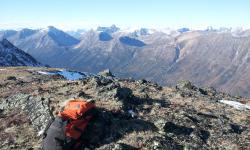
Eagle Plains and Sun Summit Minerals Execute Option Agreement for the Theory Copper-Gold Project, British Columbia
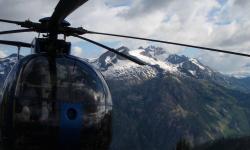
Eagle Plains and Earthwise Minerals Execute Option Agreement for the Iron Range Gold Project, British Columbia
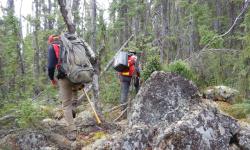
Eagle Plains and Partner Refined Energy Receive Permit for Drilling at Dufferin West Uranium Property, Saskatchewan
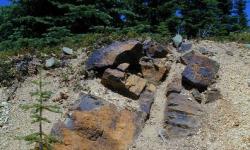
Eagle Plains Announces Letter of Intent with Earthwise Minerals for Option of the Iron Range Project, British Columbia
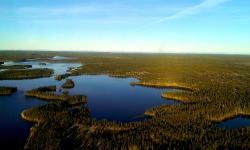
Eagle Plains Partner Xcite Resources Reports Results From Fieldwork at the Uranium City Area Projects, Saskatchewan
